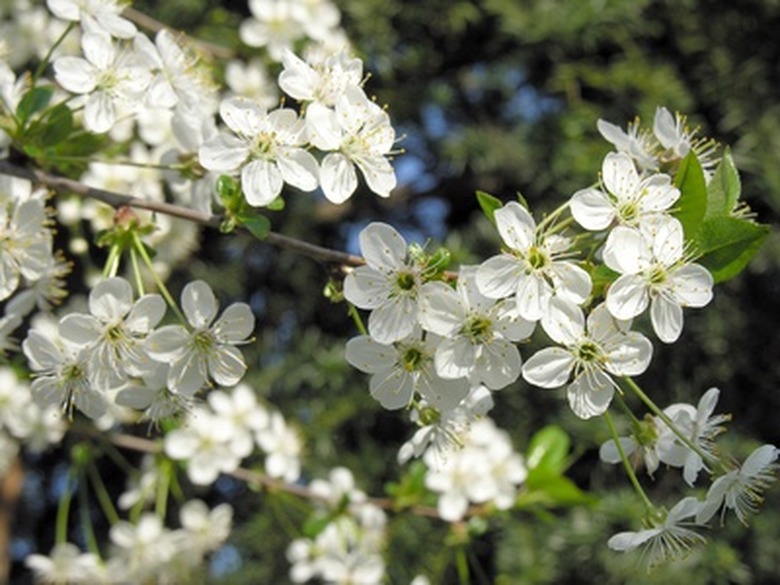How To Grow Fruit Trees In Alabama
Things Needed
- Shovel
- Gypsum
- Compost
- Manure
- Fertilizer (10-10-10)
- Lyme
- Sulfur
- Tractor
- Disk plow
- Broadcast spreader
- Fruit trees
- Mulch
Because of Alabama's characteristically mild coastal winters, a wide variety of fruit trees will grow well in the state. Fruit trees require warm temperatures when budding, the right temperatures in winter to avoid freezing, and good nutrition in the soil. The key to growing good fruit in Alabama is to match a tree to the correct USDA hardiness zone and to improve the soil so that the fruit will thrive.
Step 1
Consult the USDA hardiness zone map to determine what hardiness zone your growing region falls into. Alabama falls inside the USDA zones 7 and 8, with winter temperatures that rarely fall below 0 degrees Fahrenheit in the northern mountain regions. Summer temperatures for southern Alabama average around 80F, but may climb above 100F in late summer.
Step 2
Have your soil tested in fall for spring planting. The Alabama Cooperative Extension system maintains a soil laboratory that will test your soil and make recommendations on soil amendments to improve nutrients, soils structure and pH based on the tests. To submit a test, contact your county extension office for paperwork, fees and instructions on how to take and package a soil sample and where to send it.
- Because of Alabama's characteristically mild coastal winters, a wide variety of fruit trees will grow well in the state.
- The key to growing good fruit in Alabama is to match a tree to the correct USDA hardiness zone and to improve the soil so that the fruit will thrive.
Step 3
Purchase soil amendments based on the recommendations made by the soil test for step 2. Amendments may include gypsum to break up clay soil, compost, manure and organic material to enrich the soil's nutrient structure, or a balanced (10-10-10) fertilizer. Additionally, you can adjust the pH of your soil by adding lyme to raise the pH or sulfur to lower it. Fruit trees require a pH between 6.0 and 7.0 to take up nutrients effectively.
Step 4
Break up the soil of your orchard to a depth of 12 inches with a disk plow pulled by a tractor. You can rent equipment such as this at a heavy equipment rental company. Spread your amendments to a depth of 4 inches using a broadcast spreader. Then mix the amendments with the soil by passing a plow over the soil again. Amending your entire orchard will encourage fruit trees to develop an extensive root system.
- Purchase soil amendments based on the recommendations made by the soil test for step 2.
- Break up the soil of your orchard to a depth of 12 inches with a disk plow pulled by a tractor.
Step 5
Purchase fruit trees from an orchard that will certify that the trees are hearty to your region. Apple and pear trees should be heat-tolerant hybrids. Stone fruit trees, such as peaches, plums, apricots and cherries, thrive in the lower portion of the state. In the mountainous upper regions, you may need to provide protection from sudden late-season cold in order for these early-flowering trees to bear fruit.
Step 6
Dig a planting hole for your fruit trees that is twice as large as the root ball of the tree, but no deeper. Place the root ball into the planting hole and fill in the sides with dirt. Barely cover the top of the root ball with dirt. Water well until the trees become established. Mulch around the trees to hold in water and prevent grass from growing around them.
- Purchase fruit trees from an orchard that will certify that the trees are hearty to your region.
- Mulch around the trees to hold in water and prevent grass from growing around them.
Tip
The official state soil of Alabama is Bama soil, which is a loamy, rich and well-drained delta soil that is characteristic for the south and western portion of the state. The remainder of Alabama is characterized by Appalachian plateau, Piedmont and upland soils which are clay-like in consistency.
